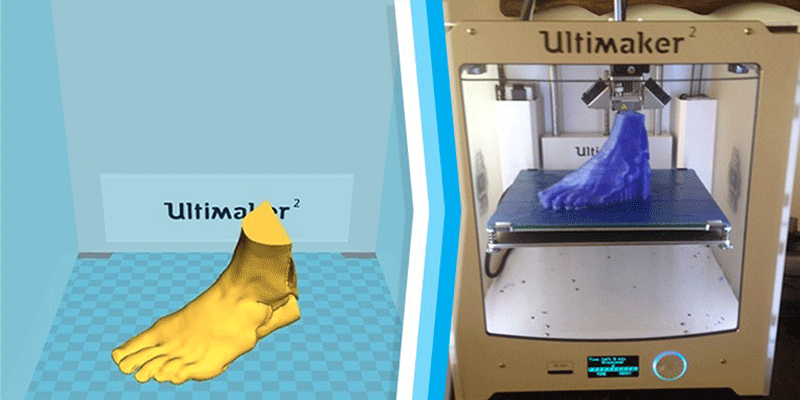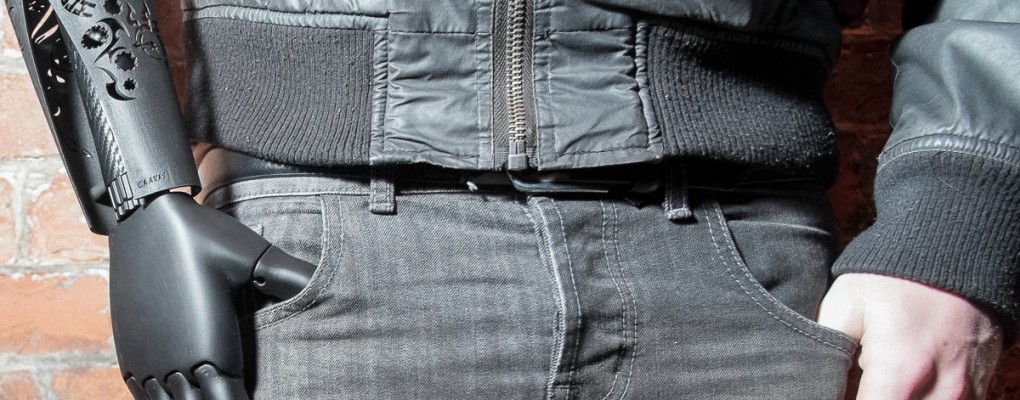Some time ago I wrote an article about a venture called 3D Life Prints, based in Nairobi, Kenya. I now had the chance to speak directly with the organization’s founder, Paul Fotheringham. The former investment banker decided to make a radical change and use his contacts and international experience to make a significant difference in the lives of people. Fotheringham set out on using 3D printing to locally manufacture some of the items that are needed most: in many cases, that means prosthetics. As necessary as they may be, getting them to those in need is not as easy as we would sometimes like to think. For amputees in some of the world’s poorest nations, the term “mobility” has a very different meaning than it does for many Westerners.
“It is not like you just say ‘who wants a prosthetic hand?’ and people flock to you,” Paul told me during our long Skype conversation. “There are so many issues to consider, even before you find someone who is a good test candidate for a prosthetic hand or leg. One important aspect issue to consider, for example, is that person’s will to use a mechanical limb. The only way to address these issues is to really and continuously be present directly in the country and on the field.”
So, that is exactly what Paul did. Originating from Scotland, he was an investment banker in Hong Kong working for some of the world’s largest corporations before moving to Kenya to work for a not-for-profit bank. He then began to learn about the possibilities offered by 3D printing and started 3D Life Prints to help work with local institutions and international NGO’s in order to give local amputees new possibilities in life. While still in its infancy, the project has already grown significantly. Paul used the network of international contacts he built during his travels and expanded operations in other nations including Cambodia, Myanmar, and Malawi.
All these activities implement desktop 3D printing in their services, but not all of them are dedicated solely to prosthetics. For example, following the lead of 3D Life Prints’ current CEO, who is also the CEO of a landmine removal company in Afghanistan, 3D Life Prints is working to create copies of landmines to educate local children. Currently more than 1.500 children a year are killed in Afghanistan alone because they pick up or touch an active landmine. These are often made in such shapes that they attract the childrens’ attention, so education is the best way to limit the dangers.
Paul can leverage his contacts to get through to local people, but it is not easy. “We see people who have lost an arm because they had their truck stolen and the robber cut it off, or because they just did not get immediate care after an accident,” Paul explains. “However, only in 5% to 10% of these cases, can we use one of the e-NABLE models. In most cases, the hand is cut off at the elbow and the most requested and important prosthetics are for lower limbs.”
Lower limb prosthetics are also the most difficult to manufacture for many reasons. One is the durability of the materials. Another is comfort. Alex Zanardi, the famous F1 driver who lost both his legs in an accident, explained to me that when you have to put your entire weight on a limb, which is resting on a plastic surface with a small area, the discomfort grows very quickly. Paul and his team, which now includes ten people in Nairobi, use basic 3D scanners to reproduce the exact shape of a leg socket and he is now working with designer Maurizio Casella to develop new prosthetic models.
Even this sometimes is not enough. Some amputees will refuse to wear something that will make them look out of place in the eyes of their peers. While “bionics” might be an interested and appreciated concept in the West, a mechanical hand is seen as something too strange in other parts of the world, where they do not come face to face with technology and robotics as often. With 3D printing, the 3D Life Print team works to develop surfaces that resemble the human skin, by mixing colors. The technology is not quite there yet, but it is improving rapidly.
So is Paul’s network, even beyond the developing world. Part of his organisation is already working with UK hospitals at printing organ models for surgeons. The goal here is to build a large database of organs and possible diseases or fractures, while also working to get the price of an organ model print down to a few dollars. “We want to make it possible for any doctor around the world to upload the MRI data and receive a 3D print of the body part he or she is to operate. This will contribute to cut times and operating expenses considerably.”
To help finance this and all of its other ventures, 3D LifePrints is, soon, going to launch a Kickstarter campaign. “We feel this is something that is needed worldwide and we intend to make it into a self sustaining business as well, in order to continue to expand it. Some of the prosthetics may be subsidised, some may be free, and some may be purchased. Donations are welcome, but we do not want to rely on [donations alone]. This is our future career, now, and we are convinced it is going to have a significant global impact within the next 5 to 10 years.”
One day, better surgical results through 3D printing may result in a reduced need for 3D Life Print’s prosthetics; however, I am fairly sure Paul and his team will not mind at all.






